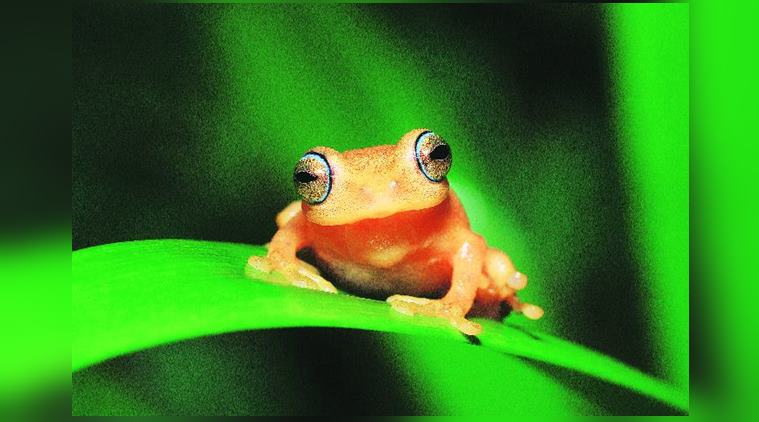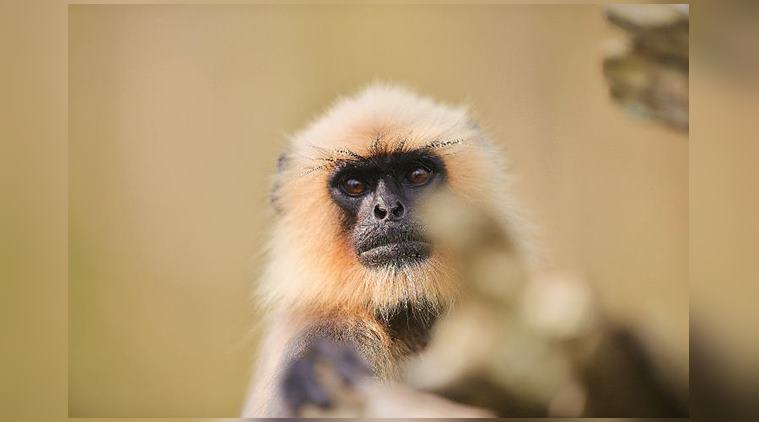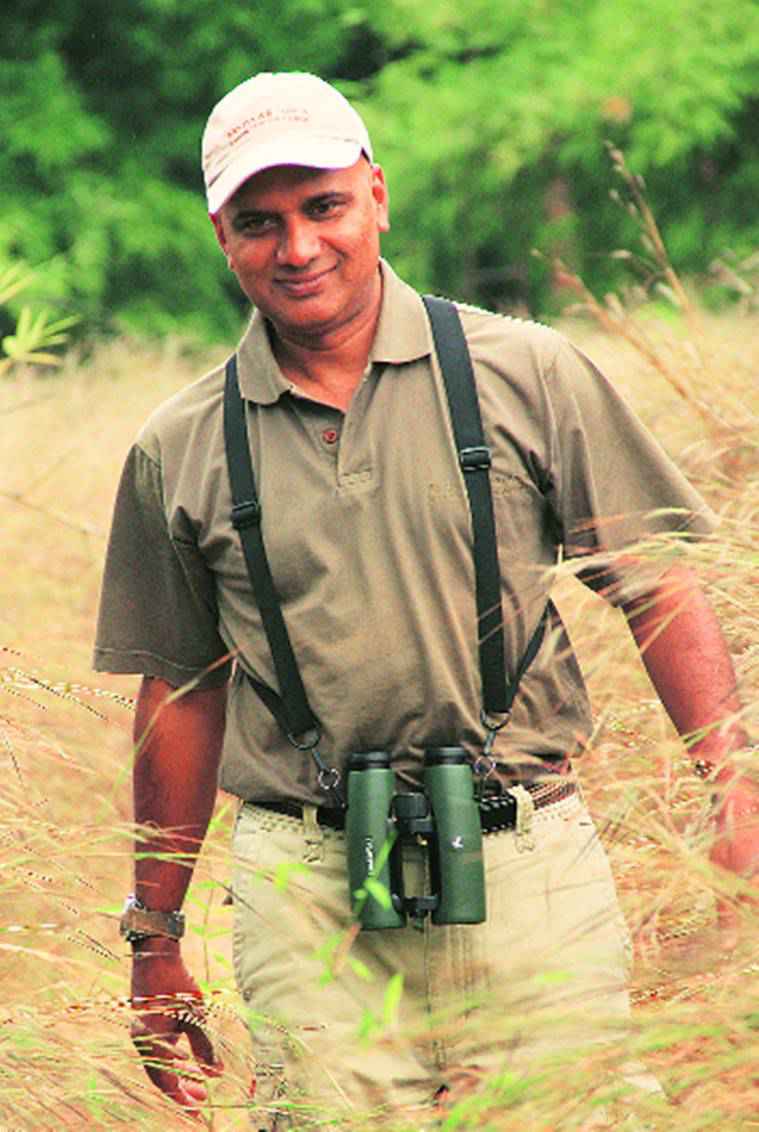
It’s monsoon in Jog Falls, Karnataka. The forest has sprung to splendid, teeming life. The streams of the Western Ghats gush forth with vigour. But what is a foot-flagging frog (Micrixalus aff. saxicola) to do? The roar of the waters is so loud that his urgent mating calls are going unheard. When music won’t do the trick, a flashy dance is the only option. So, from its position on a rock, he slowly stretches his hind leg, shows off his webbed foot and waves it many times in the air. That leggy dance does two things — wards competing males off his rock, and, finally, gets the attention of the female.
This little vignette — shot in the Kathalekan swamp — is one of many stories in Wild Karnataka, a documentary film that celebrates the astonishing diversity of Karnataka’s wildlife. Four years in the making, the film showcases the state’s creatures great and small, across both storeyed landscapes such as the Kabini forests, as well as the less-frequented Deccan plateau or the elusive underwaters along the coasts. “We wanted to change the narrative of wildlife films, which are mostly focussed on high-profile animals like tigers. We wanted to draw the attention of the audience to smaller and interesting creatures like frogs, crabs, draco lizards and birds,” says Sarath Champati, 57, a naturalist for over 25 years, and a core member of the team that imagined and made Wild Karnataka.
Shot on 4K resolution (ultra high-definition), the film has won serious bragging rights for its production quality, storytelling and script, but also for its voiceover — done by natural historian and wildlife broadcaster Sir David Attenborough. “It was not easy to get him on board, but we argued that he had done little work in India — and that had to change. Before he agreed finally, he went through the script and a rough edit to make sure that the film matches up to his calibre,” says filmmaker Kalyan Varma, 39.

While that stamp of world-class approval was a bonus, Wild Karnataka began with the ambition to make a homegrown film. “I have been making films for BBC and National Geographic for several years now. But there was always the limitation of doing it for a Western audience. I wanted to make a film for ourselves and our people,” says Varma. A wildlife photographer and filmmaker for over a decade, Varma recounts his encounters with children in the villages of the state. “If I would ask children in villages about Karnataka’s wildlife, they would say giraffe or hippopotamus. And so I thought we should make a film that would appeal to them — and not just seasoned wildlife travellers,” says Varma.
Both Varma and filmmaker Amoghavarsha JS separately approached Champati with the idea of making such a film in 2015, when the naturalist suggested they work together. They also succeeded in making the Karnataka forest department a part of their endeavour. From then on, the film was an enterprise of collaboration. Varma and Amoghavarsha led a team of 20 wildlife photographers and filmmakers — some experts in certain animals or habitats — to capture sequences that tell the story of Karnataka’s wildlife.
To start with, the filmmakers had a wishlist of animals that they wished to shoot. Much of their decisions were based on the work of the thriving community of wildlife researchers in the region. “For example, we know about the foot-flagging frogs in the streams of the Western Ghats for about six years now, thanks to the work of Dr Gururaja KV. They remain there for two weeks doing this display and then they are gone. We’ve been discovering more frogs in the Western Ghats in Kerala and Karnataka. So, we wanted to highlight the amphibian diversity — an indicator of the richness of the forest ecosystem,” says Champati.

True to the filmmakers’ stated mission, the dramatis personae of Wild Karnataka range across species, showcasing in vivid detail the rhythms of life and survival in the forest. An elephant herd forages for food in a drying forest. A jungle cat — “notoriously difficult to shoot”, says Varma — watches over its litter of kittens in Koppa when a king cobra slithers into the scene. Will the kitten know enough to stay away? A resplendent king cobra devours another snake in the lush-green Agumbe rainforest. A female of the species builds a nest of leaves around its eggs, and watches it for over a month — without eating anything. It finally creeps away because if it stays longer, it might end up eating its own children.
A carpet of sand bubbler crabs covers a beach in Karwar, as the crustaceans forage for food at breakneck speed. But wait, time and tide wait for no crab. “They have an amazing feeding strategy. When the tide is coming back, they construct a sand bubble, a castle-like thing under which they can hide for some more time,” says Champati.
In tune with its irreverence for the celebrity big cats, the film even features a group of otters in Kabini chasing away a tiger from the waterhole. “We were shooting otters from the Jeep along the river. We had no idea a tiger was there. Suddenly, we saw it, lazing in the waterhole. The four otters charged at him, and he scampered off. It isn’t that the tigers are scared of otters. But this was a young male, a little tentative. He had no idea what came at him so fast,” says Champati, laughing.
Luck and serendipity played a big part in shooting the film. Sometimes, the forest was just not ready to yield its secrets. “For two weeks in 2015, we were in Koppa Raichur looking for the Great Indian Bustard. We were sure about one mother and two chicks, but we were unlucky. In any case, there are only four-six birds left in that park,” says Champati. At other times, it was a Jeep that foiled their plans. “We hadn’t slept that night due to excitement. A black panther was mating in Kabini with a spotted female. But early in the morning, our Jeep just refused to start. We lost the whole day. And in the forest, everyone saw the mating couple on the tree for at least two hours,” says Champati.

The filmmakers have, over the years, seen both the highs and lows of wildlife conservation in Karnataka. “In Bandipur and Kabini, the wildlife numbers have gone up, especially of the big cats. There is better protection, and less human-induced pressures, like farmers grazing cattle inside. But we can see the damage in non-protected areas and forests, with highways becoming wider, more hydel power projects, villages becoming larger, coffee plantations putting up fences in the path of elephants,” says Champati.
The mysterious effects of climate change have also been felt in these landscapes. Bamboo last flowered in Kabini and Bandipur in 2009. Ten years later, it hasn’t regenerated.
The filmmakers were absolutely sure they wanted to shoot the congregation of elephants, just before the onset of monsoon, on the banks of the Kabini. “The elephants start gathering there from February onwards. The forests have dried up by then. And here, they can get grass as well as water. They come from different parts of the Nilgiri Biosphere Reserve. I worked in Kabini from 1996 to 2001 and we saw them every year. One year, we counted 550 elephants. Most of the time, spotting 300 elephants is normal. But in the last four years, because of the erratic monsoon, the congregation just hasn’t happened. We couldn’t shoot it for the film,” says Champati.
Despite such challenges, Wild Karnataka stays away from overt conservation message. “People will conserve something only when they love it. So, this is an attempt to make the people fall in love with Karnataka’s wildlife,” says Varma. Their evangelism, though, will take another form. While the filmmakers are in talks with Amazon and Netflix for greater dissemination, their first goal is to put out a Kannada version of the film. “We want to make it as open and accessible as possible, especially to villages. We’ve plans to make hundreds of DVDs, and screen it in schools and range forest offices. So that it becomes a part of nature interpretation, and more people know and celebrate the wildlife of Karnataka,” says Varma.
This article appeared in print with the headline ‘All Creatures Great and Small’